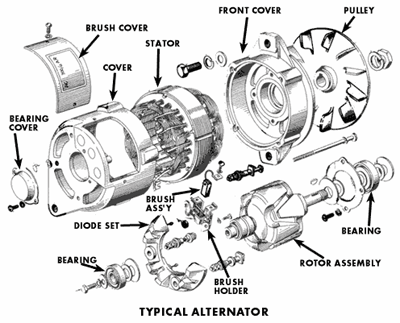top of page

CAR REPAIRS
Something's wrong with your vehicle but not too sure what's up? Bring it to us and we will sort it out for you!
 AlternatorCommon Symptoms: 1. Warning/indicator light 2. Headlights are dim or flickering 3. Other electrical failures 4. Burning smells and strange noise 5. Battery fails 6. Car stalls |  Aircon Compressor/CondensorAir conditioning systems require ongoing maintenance such as: 1. Running the system at least once a week to keep gas and oil circulating through the system. This helps to extend the life of seals in the system 2. Servicing the system annually and replacing the receiver dryer every 2 years 3.Ensuring the drive belt is adjusted and in good condition. |  Auto TransmissionAuto Transmission service is maintenance that is often ignored. Your auto transmission transfers power produced by the engine to the wheels via drive shafts and operates at high temperatures. It is these extreme temperatures, as well as wear and tear, that cause transmission fluid to burn. Auto Transmission servicing usually includes: 1. Changing of auto transmission fluid (ATF) 2. Replacing internal or external filter (where applicable) 3. Checking for leaks |
|---|---|---|
 Car brakesBraking system is extremely important and essential to keep you and the other drivers safe on the road. Here are some examples of faulty brakes: 1. Difficult to press the pedal 2. Squeaky noises when applying the brakes 3. Strong vibrations |  CV joints and DriveshaftA drive shafts primary purpose is to transmit torque and rotation between the transmission and the wheels. Some common CV joint and driveshaft problems below: 1. Clicking or knocking noise when cornering 2. Clunking noise on deceleration and acceleration 3. Vibrations through the car while driving |  Car EngineEven with regular maintenance and servicing, engine repair can be required from time to time. Common signs of engine faults are as follows: 1. Excessive oil consumption 2. Oil leakage 3. Engine overheating 4. Engine lacking power Common engine repairs are as follows: 1. Replacing gasket 2. Repairing oil leaks 3. Replacing engine mounts 4. Repairing cooling systems 5. Replacing timing belts |
 Exhaust SystemThe exhaust system is designed to remove gases produced during your engine’s combustion process. Common exhaust system problems include the following: 1. Excessive noise levels 2. Lack of power 3. Rattling noises from under the car 4. Leaking gaskets 5. Exhaust fumes entering the cabin |  Radiator and Cooling SystemYour car’s engine will produce heat when driven at highway speeds so the main function of your engine’s cooling system is to dissipate the heat into the air and prevent your engine from overheating. The cooling system in your car requires regular servicing and maintenance to ensure your engine stays in good condition and does not overheat. Common cooling system parts include: 1. Radiator, radiator cap 2. Thermostat 3. Water pump 4. Radiator hoses 5. Coolant |  StarterStarter motors are an important part of your car’s starting and charging system. They are designed to initially crank your engine when you first start by engaging with a gear on the flywheel of the engine so that the engine can fire. Common starter motor faults include: 1. Engine will not turn over when you turn the key 2. Loud click when you turn the key and the engine does not turn over 3. Engine turns over very slowly and then stops |
 Steering and SuspensionThe suspension system is to ensure vehicles' safety. Suspension systems still need the basics to operate including shock absorbers, struts, suspension bushes, tyres and springs. The steering and suspension in your car provide cornering stability, reduced braking distances and optimise your tyre’s contact with the road. Common signs of steering and suspension problems include: 1. Tyre wear 2. Vehicle pulling to one side while driving 3. Vibrations through the car and steering wheel |  Timing Belts and ChainsA well serviced car can see a timing chain last the life of the engine. However, if you skip a service or are late with your servicing, timing chain life can be shortened. Timing belts control the timing of the engine's valves so that they open and close in sync with the engine’s pistons to inject fuel and air mixtures and remove exhaust gases. Timing belt failure can be due to the following common symptoms: 1. Old age 2. Oil Contamination 3. Poor fitting |
bottom of page